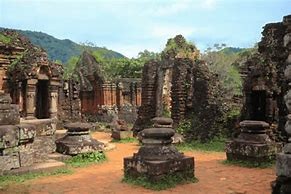
Quang Nam strives to promote sustainable tourism at My Son Sanctuary
Latest
The locality will also step up the application of scientific-technological advances in the conservation work, and continue strictly enforcing regulations on state management, as well as the World Heritage Convention and the Cultural Heritage Law.
Phan Ho, Director of the Management Board of My Son World Cultural Heritage Site, said since the sanctuary won UNESCO recognition in 1999, many organizations and individuals, both at home and abroad, have joined hands in the preservation.
Among them, there are the UN Educational, Scientific and Cultural Organisation (UNESCO), JICA (Japan), Lerici Foundation (Italy), the University of Milan, and the Archaeological Survey of India (ASI).
Apart from the existing tourism products at the tower temples, the province will develop new ones in the buffer and core areas this year, including culture-heritage and eco-tourism products in a 1,158-ha forest, he added.
 |
| Quang Nam targets sustainable tourism at My Son Sanctuary. (Photo: VNA) |
The connectivity between the sanctuary and other heritage sites in the central region and major tourism hubs will also be strengthened, Ho said, adding that the management board will improve personnel quality, especially tour guides, and personify services at the sanctuary.
Once the religious and political capital of the Champa Kingdom, My Son Sanctuary is located in a hilly landscape in Duy Phu commune, Duy Xuyen district, about 70 km southwest of central Da Nang city and 40 km from Hoi An city.
It comprises eight groups of 71 monuments built throughout the 7th to 13th centuries. Having their spiritual origin in Hinduism of the Indian sub-continent, My Son temples were built to worship the Hindu parties such as Krishna and Vishnu, but above all Shiva.
The first construction of My Son dated back to the 4th century under the reign of Bhadravarman for the worship of God Shiva-Bhadresvara. But later on, the temple was destroyed.
At the beginning of the 7th century, King Sambhuvarman had it rebuilt. Each new monarch came to My Son after he acceded to the throne for the ceremony of purification and to present offerings and erect new monuments, which explains why My Son was the only place where Cham art flourished without interruption from the 7th to 13th century.
According to UNESCO, the conservation of the My Son monuments began in the early part of the 20th century soon after their discovery in modern times by French archaeologists. As a result of wars, many tower temples were damaged. However, preservation work has been carried out and the remaining tower temples have been maintained and are well-preserved.

















